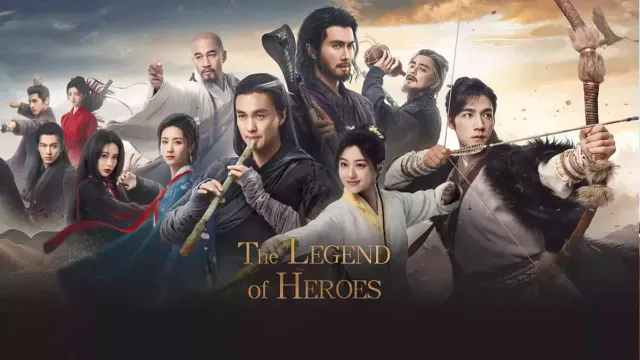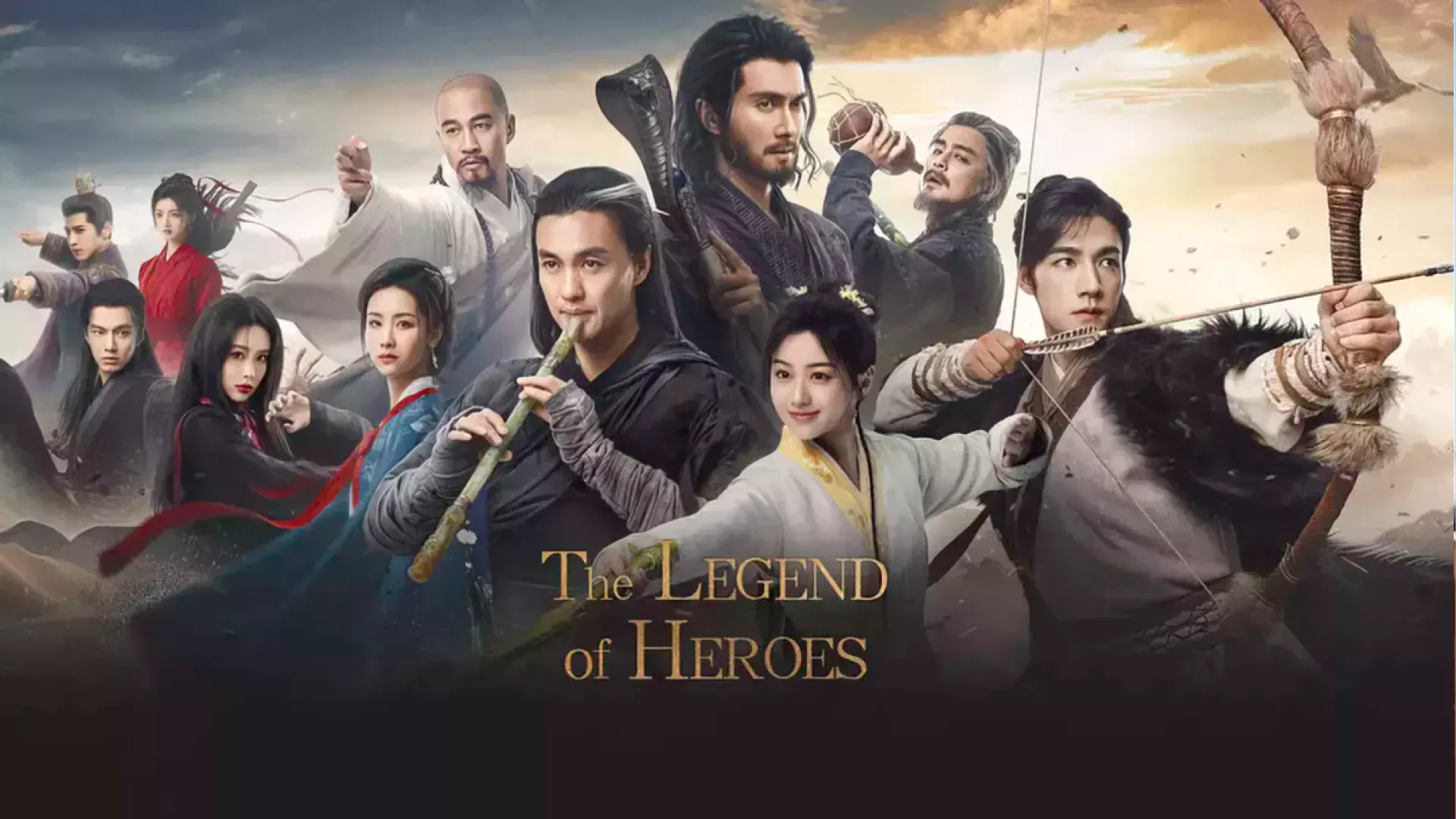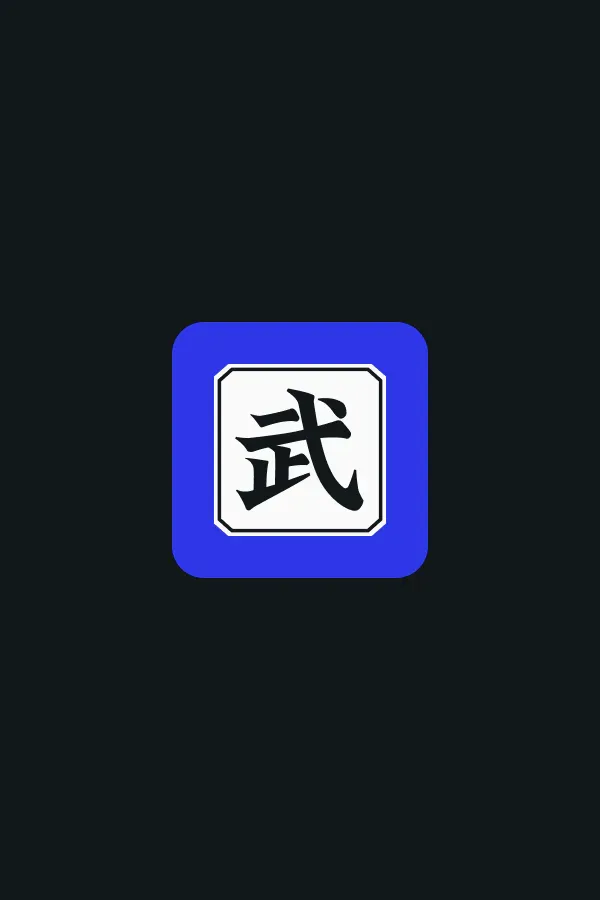Hou Tonghai (simplified: 侯通海, traditional: 侯通海, pinyin: Hóu Tōnghǎi, jyutping: hau4 tung1 hoi2), known as the Three-headed Dragon (三头蛟 – Sāntóu Jiāo), stood as one of the most ferocious and dangerous villains in the jianghu during the late Song Dynasty, embodying the ruthless violence and martial prowess that characterized Wanyan Honglie’s most effective agents. As a skilled martial artist who specialized in aggressive combat techniques, he represented the intersection of martial arts mastery and moral corruption that defined many of the jianghu’s antagonists.
Hou Tonghai’s character served as a crucial element in the broader conflict between the Song Dynasty and the Jin Empire, demonstrating how individual martial artists could become instruments of foreign powers while maintaining their own distinctive fighting styles and combat preferences. His ferocious approach to combat and his willingness to use any means necessary to achieve his objectives made him a particularly dangerous opponent for the protagonists and their allies.
The contrast between Hou Tonghai’s martial arts abilities and his willingness to serve foreign interests revealed the complex moral landscape of the jianghu during this period, where personal power and political opportunity often outweighed traditional notions of loyalty and honor. His character represented the darker aspects of martial arts culture, where skill and technique could be used to advance destructive and morally questionable objectives.
Biography
Early life and training
Hou Tonghai’s background in martial arts training provided him with the foundation necessary to develop his distinctive Three-headed Dragon fighting style. His early training focused on aggressive combat techniques that emphasized power and intimidation over traditional aesthetic considerations, making him particularly effective in combat situations where psychological warfare was as important as physical skill.
His development of the Three-headed Dragon style reflected his innovative approach to martial arts training, as he combined elements from various traditional styles with his own insights and modifications. This eclectic approach created a fighting style that was uniquely suited to his physical abilities and combat preferences, emphasizing ferocity and unpredictability.
The nature of his martial arts training during this period reflected the broader challenges facing the jianghu, as various martial artists sought to develop techniques that could give them advantages in increasingly dangerous and competitive environments. This environment created opportunities for innovation and experimentation, as practitioners like Hou Tonghai sought to create fighting styles that could overcome traditional limitations.
Development of the Three-headed Dragon style
Hou Tonghai’s creation of the Three-headed Dragon style represented his understanding of how psychological warfare could be integrated with physical combat techniques to create a more effective fighting system. The style’s name and techniques were designed to intimidate opponents and create psychological advantages that could be exploited during combat.
The development of this style reflected his strategic thinking and his understanding of how different elements of combat could be combined to create a more effective whole. His emphasis on ferocity and unpredictability made him particularly difficult to counter, as opponents often found themselves facing techniques that were both physically dangerous and psychologically unsettling.
His mastery of this style demonstrated his innovative approach to martial arts training and his willingness to develop techniques that were outside the mainstream of traditional practice. This willingness to experiment and innovate made him a particularly dangerous opponent, as his techniques were often unfamiliar and difficult to counter effectively.
Recruitment and loyalty
Hou Tonghai’s recruitment into Wanyan Honglie’s service marked a significant turning point in his career, as it provided him with access to resources and opportunities that would have been impossible to obtain through legitimate martial arts practice alone. His decision to serve the Jin prince reflected both his desire for personal gain and his willingness to use his martial arts abilities to advance foreign political objectives.
The relationship between Hou Tonghai and Wanyan Honglie was characterized by mutual exploitation, as the Jin prince gained access to a skilled martial artist who could carry out operations that required both martial arts skill and psychological intimidation while Hou Tonghai received financial rewards and protection from the consequences of his actions. This arrangement demonstrated how foreign powers could systematically recruit and utilize skilled martial artists to advance their political and military objectives.
His position as one of Wanyan Honglie’s most trusted agents made him particularly valuable to the Jin prince, as he could be relied upon to carry out complex operations that required both martial arts skill and strategic thinking. This trust reflected the quality of his work and his ability to achieve objectives consistently while minimizing risks to his patron.
Operations and missions
Hou Tonghai’s various operations for Wanyan Honglie demonstrated his versatility as both a martial artist and a strategic operator. His missions ranged from direct combat operations against Song Dynasty forces to intelligence-gathering activities that required his unique combination of martial arts skill and psychological intimidation.
The effectiveness of his operations reflected his understanding of how martial arts skills could be applied to achieve broader political and military objectives. His ability to use his Three-headed Dragon style to intimidate opponents while maintaining his combat effectiveness demonstrated his skills as both a martial artist and a psychological warrior.
His success in various missions enhanced his reputation within Wanyan Honglie’s organisation and increased his influence over the prince’s decision-making processes. This growing influence reflected his value to the Jin cause and his ability to deliver results consistently.
Personality and traits
Hou Tonghai was characterized by his ferocious nature, his willingness to use violence for personal gain, and his complete lack of moral restraint. His personality combined exceptional martial arts skill with a ruthless approach to achieving his objectives, making him one of the most dangerous antagonists in the jianghu.
Martial arts abilities
Three-headed Dragon style
Hou Tonghai’s mastery of the Three-headed Dragon style represented his complete embrace of martial arts techniques that prioritized psychological warfare and intimidation over traditional aesthetic considerations. These techniques emphasized power, unpredictability, and psychological dominance, making them particularly effective in combat situations where survival and victory were the primary objectives.
The development of these techniques reflected his innovative approach to martial arts training, as he combined elements from various traditional styles with his own insights and modifications. This eclectic approach created a fighting style that was uniquely suited to his physical abilities and combat preferences.
His expertise with these techniques made him a formidable opponent in one-on-one combat situations, as his opponents often found themselves facing techniques that were both physically dangerous and psychologically unsettling. This advantage was particularly significant in the jianghu, where psychological warfare could often determine the outcome of a battle before physical combat even began.
Ferocious combat techniques
Hou Tonghai’s specialization in ferocious combat techniques gave him a significant advantage in battles where intimidation and psychological dominance were important factors. His ability to fight with overwhelming aggression while maintaining his martial arts effectiveness made him particularly valuable in operations that required both combat skill and psychological impact.
The development of these techniques reflected his understanding of how psychological factors could be used to gain advantages in combat situations. His mastery of intimidation and psychological warfare demonstrated his innovative approach to martial arts training and his willingness to develop skills that were outside the mainstream of traditional practice.
His expertise in ferocious combat made him particularly effective in various operational environments, where his ability to intimidate opponents while maintaining his combat effectiveness gave him significant advantages over opponents who were less comfortable with psychological warfare.
Dragon qi cultivation
Hou Tonghai’s mastery of dragon qi cultivation techniques gave him access to power sources that were beyond the capabilities of most martial artists. His ability to cultivate and utilize this energy made him particularly dangerous in extended combat situations, as he could maintain his combat effectiveness over longer periods than many of his opponents.
The development of these techniques reflected his understanding of how qi cultivation could be integrated with external combat techniques to create a more effective fighting system. His mastery of dragon energy demonstrated his innovative approach to martial arts training and his willingness to develop skills that were outside the mainstream of traditional practice.
His expertise with dragon internal energy made him particularly effective in various combat situations, where his ability to maintain his combat effectiveness over extended periods gave him significant advantages over opponents who were less skilled in qi cultivation.
Relationships
Hou Tonghai’s primary relationship was with Wanyan Honglie, whom he served as one of the Jin prince’s most trusted agents. This relationship was characterized by mutual exploitation, as Hou Tonghai provided martial arts services while receiving financial rewards and protection.
Behind the scenes
Exploration of martial arts corruption
Hou Tonghai’s character served as one of the most comprehensive examples of how martial arts skills could be corrupted and used to advance destructive political objectives, demonstrating the psychological and moral costs of abandoning ethical principles for personal gain and political power. His story illustrated how individual martial arts mastery could serve broader political conflicts while creating lasting consequences that affected countless lives.
The contrast between Hou Tonghai’s technical abilities and his moral failings created dramatic tension that enhanced the complexity of the jianghu while providing opportunities for examining themes about the relationship between martial arts skill and moral character. His character development from skilled martial artist to active agent of foreign powers demonstrated how external influences could gradually transform individual character and behavior.
His relationship with other characters, particularly his patron Wanyan Honglie, highlights the contrast between different approaches to power and responsibility while examining questions about the relationship between martial arts mastery and moral principles. His ultimate fate serves as both character resolution and thematic statement about the consequences of corruption and betrayal.
Social commentary on martial arts culture
Through Hou Tonghai’s various operations and his systematic use of martial arts skills for destructive purposes, Jin Yong provides sophisticated commentary on the complex dynamics of martial arts culture during periods of political instability, particularly regarding how skilled practitioners could be recruited and utilized by foreign powers to advance their objectives. The novel suggests that authentic martial arts practice must be based on both technical skill and moral character.
The contrast between Hou Tonghai’s manipulative approach to martial arts and other characters’ more honorable approaches demonstrates different philosophies about the relationship between martial arts power and moral responsibility. His failure suggests that lasting martial arts effectiveness must be based on genuine loyalty and ethical principles rather than corruption and foreign influence.
His interactions with various political entities, from the Jin court to various martial arts schools, demonstrate the complex diplomatic and military realities that make political success extremely difficult even when supported by substantial martial arts capabilities.
Character significance in the novel
Hou Tonghai’s character serves as a crucial narrative element in The Legend of the Condor Heroes, providing both personal drama and broader thematic development. His ferocious combat style and psychological intimidation techniques create one of the story’s most dangerous antagonists, posing significant challenges to the protagonists and their allies throughout the narrative.
The character’s development from skilled martial artist to active agent of foreign powers demonstrates Jin Yong’s sophisticated approach to character development, showing how external circumstances and personal choices can combine to create destructive individuals. This transformation serves as a powerful metaphor for the broader themes of corruption, betrayal, and moral responsibility that permeate the novel.
Hou Tonghai’s presence in the story also provides historical grounding, connecting the fictional jianghu to the broader historical context of the late Song Dynasty and the corruption that contributed to its decline. His character represents the complex reality that even figures with significant martial arts abilities can become instruments of foreign powers and sources of violence and destruction.
Portrayals
See also
- The Legend of the Condor Heroes characters
- Wanyan Honglie’s Agents
External links
- Hou Tonghai on Wikipedia
- Hou Tonghai (Chinese) on Chinese Wikipedia
- 侯Hou Tonghai通海 (Chinese) on Baidu Baike
- The Legend of the Condor Heroes on Wikipedia


